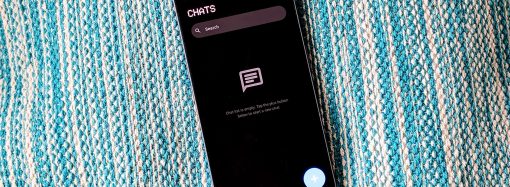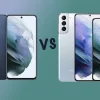Transcranial Magnetic Stimulation (TMS) treats severe depression non-invasively. It activates neuronal cells in the brain using magnetic fields. TMS has been shown to work when medication and therapy fail. TMS therapy in Dallas treatment targets mood-regulating brain areas, offering a promising alternative for severe depressives. Transcranial Magnetic Stimulation and Types TMS for anxiety in Dallas
Transcranial Magnetic Stimulation (TMS) treats severe depression non-invasively. It activates neuronal cells in the brain using magnetic fields.
TMS has been shown to work when medication and therapy fail. TMS therapy in Dallas treatment targets mood-regulating brain areas, offering a promising alternative for severe depressives.
Transcranial Magnetic Stimulation and Types
TMS for anxiety in Dallas is a safe, effective, and noninvasive treatment for depression that has not responded to medicine. The magnetic field formed by an electromagnetic coil that pulses over the scalp induces a tiny electric current in a specific brain region during TMS. TMS therapy in Dallas is non-invasive, painless, and sedation-free. Modern safety measures reduce TMS seizure and loss of consciousness risk to 0.1%. TMS patients receive four to five treatments each week for four to six weeks. Research reveals TMS has little side effects. Treatments last 40 minutes. The FDA has sanctioned theta burst stimulation, a 10-minute variant of TMS, for the treatment of depression. Sessions are conducted every day over the course of many weeks.
Repetitive Transcranial Magnetic Stimulation
TMS types include rTMS, which involves stimulating the brain in a 2-3 cm area. For almost 20 years, it has been investigated and used to treat depression, anxiety, and other diseases. Since 2008, rTMS has been FDA-approved for medication-resistant depression, and most research has focused on it.
Patients are conscious during 40-minute rTMS sessions without sedation or anesthesia. Outpatient procedures allow patients to drive themselves to and from treatment. An electromagnetic coil the size of a palm is held on the front of the head over a mood-regulating and depression-related brain region. Coil delivers short electromagnetic pulses. The magnetic pulses, about as strong as an MRI scan, stimulate brain nerve cells with modest electrical currents.
As a standalone treatment or with antidepressants, rTMS is safe. Researchers want to know if rTMS works better alongside psychotherapy. PTSD is another TMS application that needs more research.
Since the treatment is new, long-term negative effects are unknown. Since the mid-1990s, data has indicated no long-term concerns. In rTMS safety studies, most adverse effects, such headaches or scalp discomfort, were minor or moderate. TBS is a newer version of rTMS. Five times per second, theta bursts stimulate at high frequencies. Theta bursts may repeat the brain’s natural rhythm. Continuous (cTBS) and intermittent (iTBS) TBS affect brain function differently. The latest FDA-approved iTBS can be conducted in 3 minutes and has similar results and side effects to rTMS.
Deep Transcranial Magnetic Stimulation
Deep transcranial magnetic stimulation (dTMS) stimulates deeper brain areas.
Special coils penetrate 4 millimeters beneath the skull during the surgery. FDA-approved dTMS employing the H1 coil for depression that has not responded to prior treatments targets multiple brain locations. Treatment of OCD with dTM The FDA recently approved dTMS for the treatment of SOCD.
A cushioned helmet provides short magnetic fields during dTMS, similar to MRI scans. This outpatient technique requires no anesthetic or memory loss and has few side effects. Over four to six weeks, 20-minute sessions occur everyday. This technique allows patients to resume normal activities quickly.
Are There Any Side Effects of TMS?
TMS is devoid of radiation and as secure as an MRI. The implantation of the TMS coil on your scalp may induce discomfort. Headaches and migraines typically resolve by the next day. Magnetic pulses stimulate brain neurons, hence influencing brain function. Stimulation can affect blood circulation and neurotransmitter concentrations, resulting in headaches or migraines for certain individuals.
Due to the activation of nerves and muscles by magnetic fields in proximity to the treatment site, certain patients may have discomfort in the vicinity of their eyes or jaw. Certain individuals have moderate discomfort from muscle spasms or twitching resulting from this stimulation. Acoustic feedback or a pronounced “clicking” noise produced by magnetic pulse generation during therapy may result in hearing loss. TMS may also induce tinnitus, resulting in a buzzing or ringing sensation in the ears in the absence of external sound. Short exposure to these sounds and ear plugs reduce these dangers.
Syncope, or fainting, is a TMS adverse effect that can also be caused by psychological variables like procedure anxiety and physiological reasons like dehydration. Your treatment staff will help you relax before the operation. Maintaining excellent health and hydration will also help your therapy go smoothly. Finally, seizure risk is 0.1%. People with untreated risk factors, a history of a seizure disorder, or tricyclic antidepressants or neuroleptic medicines that increase seizure risk are more likely to have this.
Summary
Noninvasive transcranial magnetic stimulation (TMS) increases brain activity with magnetic waves. TMS for depression in Dallas used for the patient that hasn’t responded to medicines. However, TMS for other neurological and mental health disorders is being studied. TMS can cause mild headaches, dizziness, and lightheadedness. Serious adverse effects like convulsions are infrequent. Most depressed patients benefit from TMS therapy in Dallas. Treatment may be administered again, as outcomes are not enduring.
















